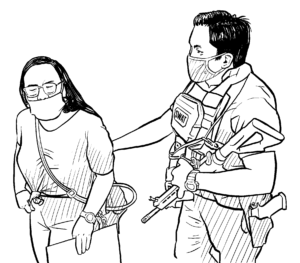Imperialist oppression of onion farmers

The Bongabon town in Nueva Ecija is known as the Onion Capital of the Philippines because it produces the largest share of onions of the country. It is also called Asia’s Onion Basket. But onion farmers, known for being the best and most patient, are reduced to tears because all their efforts go to the imperialist countries and their local ruling classes henchmen.
Imperialist agribusiness in onion production
Among different agricultural crops, onion production is considered among the most sensitive, laborious and costly. According to a study by the Pambansang Katipunan ng mga Magbubukid (PKM) in the province, the cost of an onion crop cycle can reach up to ₱150,000 to ₱200,000 per hectare. Up to 41% goes to the purchase of seeds, fertilizers and chemicals. One fourth goes to fertilizers.
It has been the policy of the reactionary government since Marcos to promote high-yielding varieties and genetically modified organisms that were developed to be dependent on fertilizers, chemicals and other technologies controlled by imperialist countries.
Because seeds, fertilizers and pesticides are not locally produced, all production input in onion farming are imported by businessmen and sold to farmers at very high prices. In Nueva Ecija, seeds produced by EastWest, an Amercian company, are the most prevalent.
Farmers gripe over the non-stop increase in prices of farm inputs, such as the skyrocketing price of a 50-kilo sack of urea from ₱1,800 in October 2021 to ₱2,600 in December 2021.
Despite increase in prices, there is a noticeable decline in the quality and quantity of farm inputs. For instance, a can of seeds which weighed 500 grams is now only 400 grams. Unlike before when a kilo of seeds would yield 200 sacks of onions, only a few farmers could now produce more than 100 sacks. Various onion plant diseases have emerged including the debilitating army worm (harabas), a type of worm that can wipe out hectares of onion farms overnight. Multinational companies purposely weaken the seeds to compel farmers to buy more chemicals to counter diseases and pests.
Importation and price manipulation
Onions sold by farmers typically costs only ₱10-₱25 per kilo, especially during harvest. On the other hand, onion prices in the local markets go as high as ₱120 to ₱250 per kilo.
Through the stock buying scheme, local merchants manipulate onion prices. Local onions bought at low prices are stored in facilities owned by the merchants themselves to create artificial shortages and justify the importation of onions. Onions categorized as “rejects” and discarded by other countries are imported at cheap rates. When local prices go down as a result of the flooding of imported onions, these merchants will again exploit the situation by buying local onions at very low prices, which they again store, and then release only when local supplies go down and prices go up.
Onion importation is the biggest factor behind the income losses of onion farmers. Of the agricultural products imported in 2020, onions comprise the biggest volume (40,585 metric tons worth ₱2.03 billion). As a result, up to 39% of local onion supply is imported. This does not include illegally smuggled onions.
In 2020, farmgate prices of onions fell by ₱8 per kilo because of the flooding of imported onions, mainly from China, authorized by the Department of Agriculture. Onion farmers suffered losses and incurred debts they can no longer pay. The Duterte regime plans to further push the importation of onions by removing the 75% tariff on the importation of 1,718 types of onions. This is in line with the Regional Comprehensive Economic Partnership (RCEP), an agreement of Asian countries pushing for agricultural liberalization.
(This article first appeared in Pulang Silangan, the revolutionary newspaper in East Central Luzon.)



